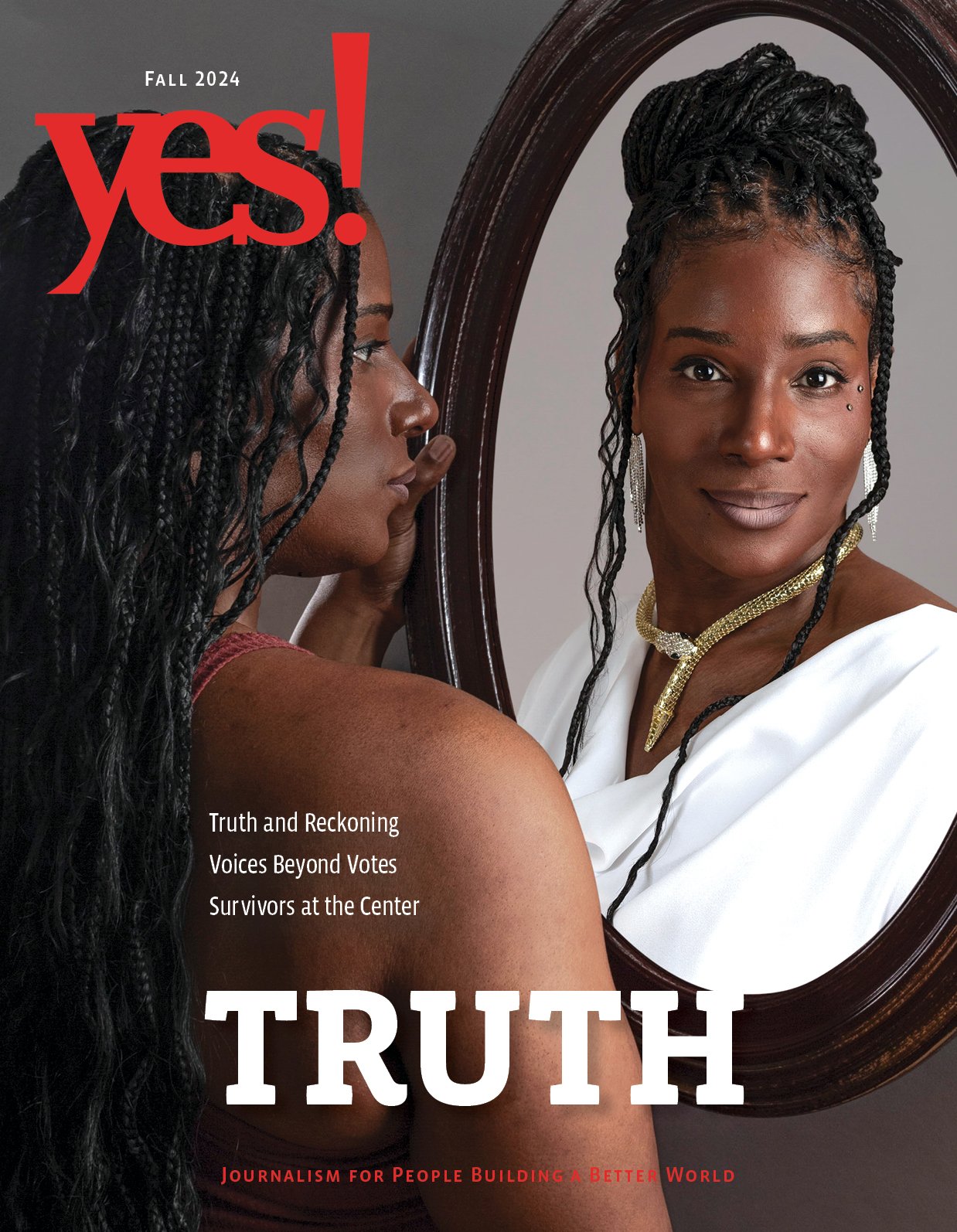
Are soil and dirt the same thing?
They’re not—soil is alive and dirt is dead. Plus healthy (and contaminated) soil plays a pivotal role in our lives, while dirt is something you get all over your clothes when you garden or slide into third base.
In this “Let’s Talk About” collection, we reconnect students with the soil. We help them dive deep into the issues of regenerative farming, environmental injustice, and even the history of eating dirt. We also let them explore how communities are fighting back to restore their cultural and historic relationship with the ground.
You and your students can learn more about the restorative powers of soil in YES! Magazine’s Dirt Issue.
How to Use This Collection
Suggested below are steps to a thoughtful and meaningful discussion with your students about dirt and its role in their personal lives and in society. Choose what is appropriate for your class.
Reading Materials
- Have students complete a pre-survey (optional).
- Choose at least one YES! article and another site’s article for a robust compare and contrast.
- Use the discussion questions—or craft your own—to gauge your students’ understanding and opinions.
- Have students complete a post-survey (optional).
- Explore curriculum if you’d like to dive deeper.
Background Information (read this first)
7 Fascinating Facts About Soil (Rainforest Alliance)
YES! Articles
The Climate Solution Right Under Our Feet
How Removing Asphalt is Softening Our Cities
Mushrooms Clean Up Toxic Mess, Including Plastic. So Why Aren’t They Used More?
How Soil Acts as a Living Witness to Racial Violence
By Reconnecting with Soil, We Heal the Planet and Ourselves
Outside Articles
Land degradation threatens human wellbeing, major report warns (The Guardian)
Would You Like a Side of Dirt With That? (Scientific American)
Residents say Love Canal chemicals continue to make them sick (PBS)
Discussion Questions
- Describe the personal and global benefits of healthy soil. On the flip side, how are you—and the world—impacted by toxic or infertile soil?
- When something is bad, unsavory, or taboo, it is often referred to as “dirty”—dirty words, dirty jobs, dirty people. Why do you think dirt has such a bad reputation? Who and what gets deemed dirty and why? Who gets treated “like dirt”?
- Twenty-two tons of toxic waste dumped into the working-class Love Canal neighborhood of Niagra Falls, New York. Poisoned city water in low-income, predominantly African American Flint, Michigan. These are examples of environmental injustice. What is environmental injustice, and why are certain communities subjected to higher levels of harm than others? What does environmental justice look like to you?
Curriculum
The Soil Story Curriculum (Kiss the Ground)


